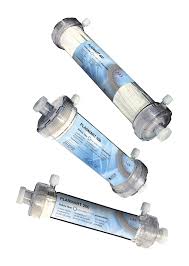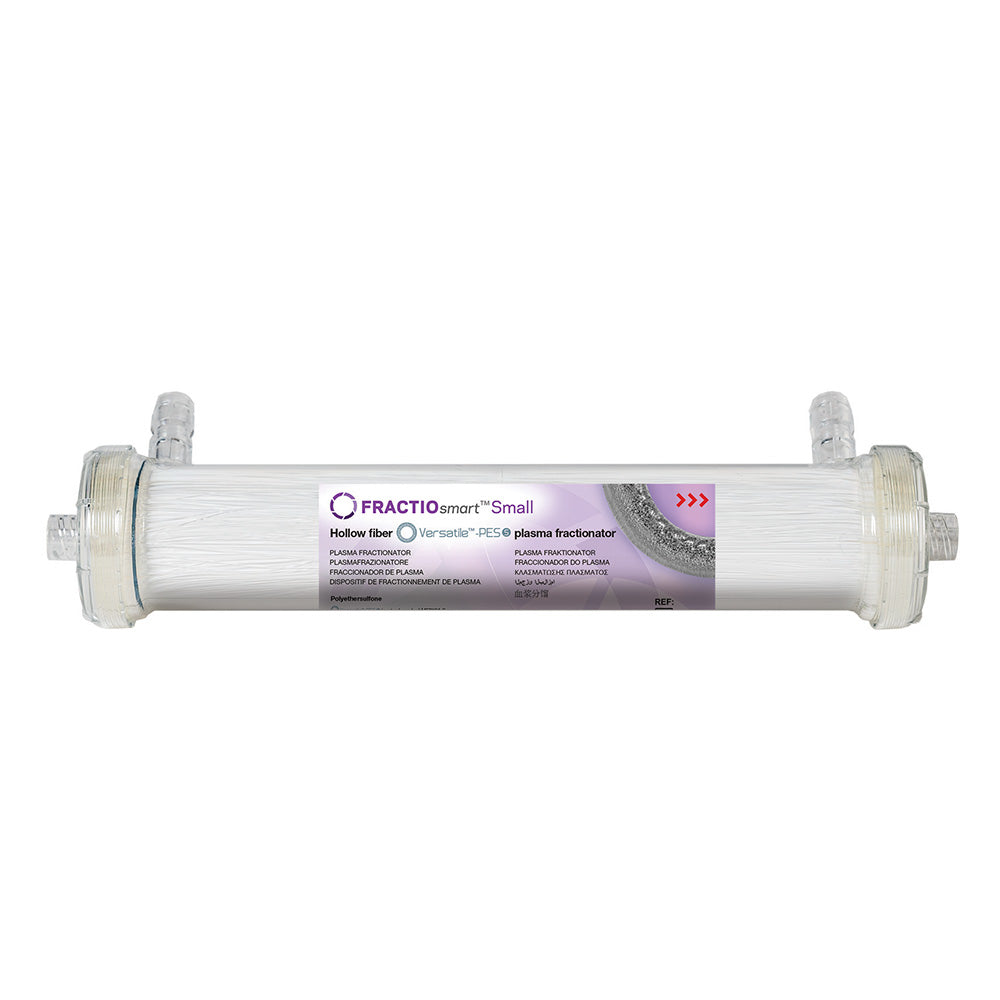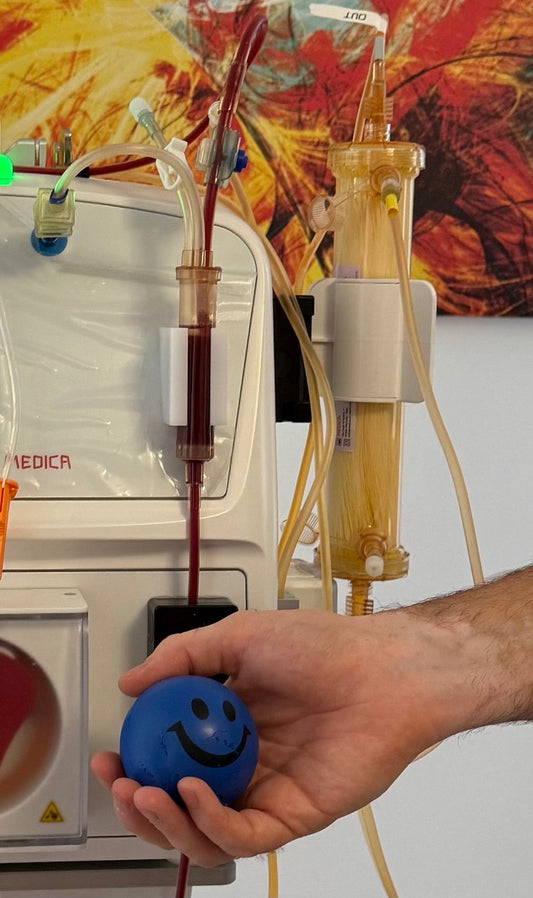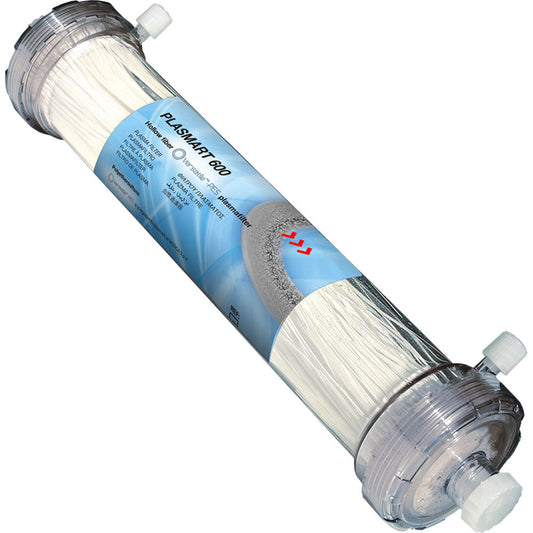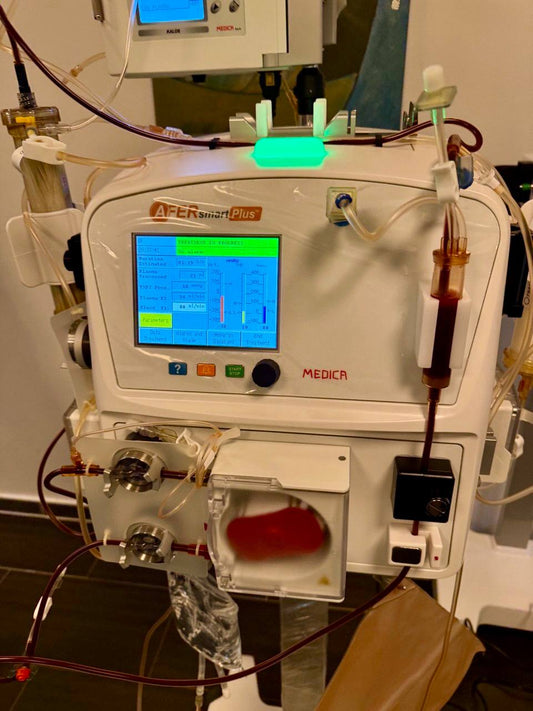We expand access to blood purification (therapeutic apheresis) as a first-line treatment for autoimmune diseases, chronic inflammation, and longevity support
Selective apheresis: Double Filtration Plasmapheresis
(DFPP, cascade filtration):
Highly efficient treatment for 70+ diseases. Filters are selected based on molecular weight of substances that should be removed.
DFPP is highly efficient for over 70 diseases and conditions including autoimmune conditions, multiple sclerosis, Alzheimer's disease, myasthenia gravis, systemic lupus, rheumatoid arthritis, kidney diseases, atherosclerosis, diabetes complications, obesity, long COVID, allergies, chronic fatigue syndrome, and heavy metal toxicity. DFPP is also used in longevity medicine and in-vitro fertilization treatments. DFPP has strong anti-inflammatory and healing effects.
DFPP is approved in the US, Germany, Japan, Canada, and other countries.
International research confirms its efficiency.
Clinics around the world are launching DFPP in outpatient setting, and we have brought this technology to Poland.
Treatment Benefits
- Non-invasive outpatient procedure
- No need for donor blood
- Targeted removal of harmful substances
- Preserves essential blood components
- Effective for multiple diseases same time
- Quick recovery with minimal downtime
Key Advantages of DFPP
-
1DFPP utilizes advanced membrane filtration (as opposed to centrifuges) to separate blood components, making it a significantly safer process.
-
2
Treatments can be performed in outpatient clinics. -
3Unlike traditional plasma exchange that discards patient's plasma, DFPP's second-stage filter selectively removes only harmful substances, returning clean plasma to the patient. No need for donor blood or plasma.
About Us
DnTripleD sp. z o.o. is the exclusive distributor of Medica S.p.A. (Italy) blood purification equipment and filters in Poland. We are committed to making DFPP, hemoperfusion and other methods of therapeutic apheresis more accessible to patients.
Therapeutic apheresis treatments with AFERsmart Plus™ system
The AFERsmart PLUS™ system from Italian manufacturer Medica S.p.A. is certified in the European Union and is being used around the world. ISO and EU quality certificates can be viewed at https://www.medica-spa.com/en/about-us/quality-and-certifications.
AFERsmart PLUS™ can be used in both outpatient and hospital settings (depending on the apheresis procedure) and can perform five types of therapeutic apheresis:
- Double Filtration Plasmapheresis (DFPP, Double Filtration Apheresis, cascade apheresis): separates blood into plasma and red blood cells; selectively removes toxins, autoantibodies, heavy metals and other harmful substances from the plasma.
- Hemoperfusion: selectively removes toxins, autoantibodies, heavy metals and other harmful substances, uses patient's whole plasma (without separation into plasma).
- Traditional plasma exchange (therapeutic plasmapheresis, TPE, PLEX): part of patient's plasma is discarded and replated with donor plasma/albumin
- Selective apheresis - used for example in organ transplant rejection
- Double Filtration Adsorption - used for patients with septic shock.
Each type of apheresis treatments is described below.
-
1. Double Filtration Plasmapheresis (DFPP)
Double Filtration Plasmapheresis (DFPP)
Selective therapeutic apheresis for treating various autoimmune and inflammatory conditions

Treatment process
Double Filtration Plasmapheresis (DFPP, Double Filtration Apheresis):
- For each patient the clinic installs a sterile single-use set. There is no contact between the machine and the blood; the blood goes only through the sterile set.
- The machine washes the single-use set with saline to remove air.
- The doctor administers anticoagulant such as heparine.
- The patient is connected to the system. The machine takes the blood.
- The first filter separates the blood into plasma and red blood cells. Red blood cells are immediately returned to the body. Plasma is heated and sent to the second filter, which removes antibodies, cytokines, cholesterol, pathogenic immune complexes, heavy metals, and toxins. This filter is selected based on patient needs, ie based on the molecular weight of substances to be removed.
- Clean plasma is returned to the body with saline. Dirty plasma is collected in a bag and can be sent to a laboratory for testing.
We offer a choice of filters manufactured by Medica S.p.A.: three types of filters target LDL, different types of antibodies, and other substances.
Because the patient loses a very small volume of plasma, no donor plasma is required. DFPP can be performed in an ambulatory setting. Albumin level should be checked before the procedure, electrolytes should be checked before and during the procedure.
DFPP is indicated for patients with various diseases across multiple medical specialties:
Rheumatology
- Systemic lupus erythematosus
- Rheumatoid arthritis
- Systemic sclerodera
- Allergic vasculitis
- Hemorrhagic vasculitis
- Polyarteritis nodosa
- Dermatomyositis
Cardiology & Vascular Surgery
- Viral myocarditis
- Angina pectoris
- Post-infarction syndromes
- Carditis in connective tissue diseases
- Systemic atherosclerosis
- Coronary heart disease
- Dyslipidemia
Neurology
- Multiple sclerosis
- Myasthenia gravis
- Allergic encephalitis
- CNS demyelinating diseases
- Slow-progressing viral CNS infections
- Alzheimer's disease
Endocrinology
- Metabolic syndrome
- Diabetes and its complications
- Insulin sensitization
- Hashimoto's autoimmune thyroiditis
- Addison's disease
Gastroenterology
- Crohn's disease
- Ulcerative colitis
- Hepatitis treatment
- Fatty liver disease
Nephrology
- Chronic kidney diseases
- Lupus nephritis
- Henoch-Schönlein purpura
- Hemorrhagic vasculitis
- Goodpasture syndrome
- Paraproteinemia
Dermatology
- Dermatitis and dermatoses
- Psoriasis
- Rosacea treatment
- Pemphigus
- Acne
- Toxicodermia
Ophthalmology
- Endocrine ophthalmopathy
- Uveitis
- Pseudotumor
- Diabetic retinopathy
Allergology
- Hay fever
- Atopic dermatitis
- Urticaria
- Physical allergies
- Hypersensitivity reactions
Pulmonology
- Fibrosing alveolitis
- Bronchial asthma
- Treatment of chronic lung diseases
Viral Diseases
- Cytomegalovirus
- Hepatitis
- Viral skin diseases
- Post-viral infection intoxication
Obstetrics & Gynecology
- Ovarian hyperstimulation syndrome
- Complex treatment of genital infections
- Climacteric syndrome
- IVF preparation
Benefits and Effects
DFPP removes or reduces:
- Autoantibodies against nerve structures
- Circulating pathogenic immune complexes
- Abnormal haptens (heavy metals/pesticides)
- Abnormal antibodies/paraproteins
- Rheumatoid antibodies
- Autoantibodies against connective tissue
- Virus particles (including hepatitis C and HIV)
- And other harmful particles and substances
Other DFPP effects:
- Increased oxygen supply to tissues
- Optimization of blood flow
- Elevation of reduced mitochondrial ATP
- Reduction of nitrosative and oxidative stress
- Patients report increased physical and mental energy, higher performance at intellectual and creative work, improved athletic performance, better skin condition.
2. Plasmapheresis (Therapeutic Plasma Exchange)
Therapeutic Plasma Exchange (TPE, PLEX)
Traditional plasmapheresis to remove a part of the plasma together with toxic substances. Requires donor plasma/albumin.
What is Therapeutic Plasma Exchange?
Therapeutic Plasma Exchange (TPE, also known as Therapeutic Apheresis, Therapeutic Plasmapheresis, PLEX) is a medical procedure designed to remove harmful substances from the blood's plasma component: part of the separated plasma is completely discarded and replaced with an albumin solution, fresh frozen plasma or plasma derivatives.
In contrast to Double Filtration Plasmapheresis which selectively removes harmful substances, TPE is a non-selective treatment.
Because TPE requires plasma replacement, it is performed in hospitals.
For more information on TPE, download the Guidelines of the American Society for Apheresis
Substances removed by TPE
- Pathogen autoantibodies
- Immune complexes
- Cryoglobulins
- Endotoxins
- Cholesterol-containing lipoproteins

Target diseases
Therapeutic Plasma Exchange (TPE) treatment is indicated for patients affected by various diseases, including:
- Vasculitis (Goodpasture syndrome and Wegener syndrome)
- Thrombotic thrombocytopenic purpura (TTP)
- Cryoglobulinemia
- Micromolecular and macromolecular myeloma
- Lupus erythematosus
- Hemolytic uremic syndrome
- Guillain-Barré syndrome
3. Hemoperfusion
Hemoperfusion
Advanced blood purification therapy for removing toxins and inflammatory mediators. Hemoperfusion uses whole blood (not plasma like in DFPP) and an adsorption cartridge.
What is hemoperfusion?
Hemoperfusion (HP) is a medical treatment that involves passing the patient's blood through a device containing an adsorbent material that removes toxic substances.
Because this is a selective method and the patient loses only a small volume of blood in the filter, no donor plasma is required.
What Hemoperfusion Removes
- Pro- and anti-inflammatory mediators
- Apo-B lipoproteins [e.g. LDL, Lp(a)]
- β-2 Microglobulin
- High levels of cytokines
- Elevated bilirubin
- Myoglobin
Treatment Applications
- Sepsis / Severe Sepsis / Septic Shock
- Multiple Organ Failure Syndrome (MOF)
- Familial Hypercholesterolemia
- Dialysis-Related Amyloidosis (DRA)
- Lp(a) Hyperlipoproteinemia
- Systemic Inflammatory Response Syndrome (SIRS)
- Treatment of rhabdomyolysis
- Hyperbilirubinemia
- In Germany used as a support therapy for patients undergoing chemotherapy (hemoperfusion does not treat cancer, it only eases the side effects of chemotherapy)

Benefits of Hemoperfusion
- Targeted removal: Selectively eliminates specific toxins and inflammatory mediators
- Rapid action: Provides quick reduction of harmful substances in critical conditions
- Complementary therapy: Can be used alongside other treatments for enhanced results
- Customizable approach: Treatment parameters (the filter) can be adjusted based on patient needs
- Broad application: Effective for multiple medical conditions across different specialties
4. Double Filtration Apheresis with Adsorption
Double Filtration Plasmapheresis with Adsorption
Helps regulate the immune response in critically ill patients (septic shock, cytokine storm, multiple organ dysfunction).
What is DFPP with adsorption?
The treatment works by passing blood through special adsorption columns containing materials that selectively bind to and remove harmful molecules while preserving essential blood components.
Key benefits
Selectively removes cytokines that drive inflammation without affecting beneficial blood components. Provides rapid improvement in hemodynamic parameters and helps restore normal immune function.
Treatment Process
Blood is drawn from the patient, passed through specialized adsorption columns that capture inflammatory mediators, and then returned to the patient. The process typically takes 4-6 hours per session.

Diseases:
Septic Shock
Helps stabilize patients experiencing septic shock by removing excess cytokines
Cytokine Storm
Effective in managing cytokine storm conditions in critically ill patients
Systemic Inflammation
Reduces systemic inflammatory response in various critical conditions
Multi-Organ Support
Provides support for patients experiencing multiple organ dysfunction
5. Selective Apheresis
Selective Apheresis Treatment
Advanced targeted therapy for removing specific harmful substances from the bloodstream

What Selective Apheresis Removes
Selective apheresis treatment can be used to remove or reduce:
- Apo-B-containing lipoproteins [example: LDL, Lp(a)]
- Inflammatory mediators
- Anti-DNA antibodies
- Anti-cardiolipin
- Immune complexes
Diseases
This treatment is indicated for patients with multiple pathologies, including:
- Familial hypercholesterolemia
- Peripheral arterial occlusive syndrome
- Focal segmental glomerulosclerosis
- Systemic lupus erythematosus
- Goodpasture's syndrome
- Cryoglobulinemia
- Thrombotic thrombocytopenic purpura (TTP)
- Devic's neuromyelitis optica
Transplantation Applications
- HLA-incompatible transplantation
- AB0-incompatible blood group transplantation
- Acute antibody-mediated rejection
Jobs
Lekarz anestezjolog, Lekarz medycyny ratunkowej - praca dorywcza, Warszawa:
Szczegóły, wymagania, wynagrodzenie: https://medjobs.pl/oferta-pracy/lekarz-anestezjolog-praca-dorywcza/
Note: All information on this website is for informational purposes only. Please consult with your healthcare provider.



